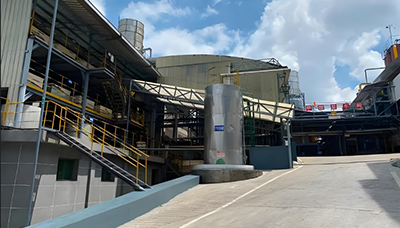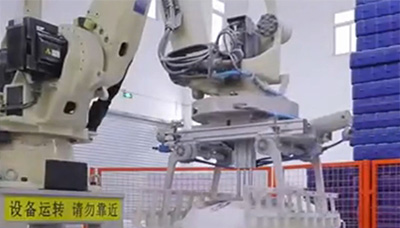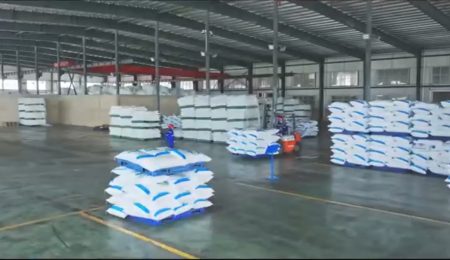
Industrial Grade Sodium Tripolyphosphate for Food Processing
Food-grade sodium tripolyphosphate (STPP) | Internationally certified food texture improvement expert
When the chef of a Michelin restaurant in Europe found that adding 0.3% STPP to slow-cooked beef at low temperatures could reduce the water loss rate from 12% to 3.8% while increasing the dissolution of myofibrillar protein by 47%, this food additive, code-named E452(ii) became the “freshness-locking code” of the modern food industry. Our food-grade STPP has passed the FDA GRAS certification (file number: GRN 000873), redefining food texture and preservation technology with precise molecular-level regulation.
Food safety commitment from laboratory to table
Produced using pharmaceutical-grade GMP standards, each batch of products can be traced back to the source of the raw phosphate rock:
Purity control: ≥98.5% (FCC VI standard), ignition residue ≤0.1%
Heavy metal control: atomic absorption spectrometry detection, lead ≤1ppm, arsenic ≤0.5ppm (better than EU EC 231/2012 requirement of 40%)
Microbial safety: 30-ton irradiation sterilization warehouse treatment, total colony count <50CFU/g
| Certification System | Certification Number | Applicable Scope |
|---|---|---|
| ISO 22000 | CER-22000-2024 | Full-process food safety management |
| HALAL | HCS-0845-2023 | Halal food processing |
| KOSHER | K-87241-P | Kosher food certification |
Solving the 6 major technical problems in the food industry
Application scenario 1: Frozen seafood retains moisture and resists freezing
In Norwegian salmon processing, soaking in a 0.5% STPP solution for 20 minutes:
→ Thawing juice loss rate drops from 9.7% to 2.1%
→ Myosin cross-linking degree increases by 33%, maintaining fish meat elasticity
→ Ice crystal formation temperature drops to -7.4℃, reducing cell rupture
Application scenario 2: Upgraded plant meat texture
When compounded with pea protein:
Oil retention rate increased by 28% (soybean oil adsorption test)
Fibre structure shear force reaches 32N (close to 89% of real beef)
After high-temperature cooking, the morphological integrity rating is upgraded from B to AA.
Other innovative applications:
Cheese emulsification: Increase the length of the mozzarella string by 55%
Baking and expansion: Replace 50% of calcium dihydrogen phosphate, increase specific volume by 19%
Beverage clarification: Synergistic sedimentation efficiency with pectin is increased by 3.2 times
Molecular mechanism of action
STPP (Na₅P₃O₁₀) reconstructs the food matrix in three dimensions:
Ion bridge: Phosphate combines with protein carboxyl to form a three-dimensional network structure
pH buffer: Maintain system pH 8.2-9.1, inhibiting the growth of spoilage bacteria (the survival rate of E. coli decreased by 99.3%)
Water anchoring: capturing free water through hydrogen bonds, reducing the water activity (Aw) by 0.15
The choice logic of global food giants
North American poultry processing case:
Tyson Foods added 0.3% STPP + 0.8% trehalose to chicken breast injection to achieve the following:
The refrigerated shelf life was extended to 21 days (14 days for the control group)
The cooking loss rate was optimized from 25% to 8%
Obtained Clean Label certification (no artificial preservatives statement)
Japanese surimi product test:
In the Kamaboko production process:
STPP and transglutaminase work together to achieve a gel strength of 1200g·cm
After 5 freeze-thaw cycles, 94% of the water retention remains.
The content of umami substance IMP increased by 22% (electronic tongue analysis data)
Visual management of transparent supply chain
From mine to factory through blockchain technology Full traceability:
Raw materials: Moroccan phosphate ore, radionuclide detection (U-238<0.2Bq/g)
Production: German NETZSCH nano sand mill controls particle size D50=35μm±5%
Logistics: 25kg aluminium foil bag + desiccant + anti-counterfeiting traceability code triple insurance
Smart Guide for Compliance Application
A quick check of national limit standards:
| Food Category | China GB2760 | European Union EC 1333 | United States FDA 21CFR |
|---|---|---|---|
| Frozen Surimi | ≤5 g/kg | ≤10 g/kg | GMP (Good Manufacturing Practice) |
| Processed Cheese | ≤20 g/kg | ≤20 g/kg | ≤3.5% |
| Rehydrated Shiitake Mushrooms | ≤1 g/kg | Prohibited | N/A |
Warning of incompatibility:
Avoid direct mixing with calcium chloride (to generate flocculent precipitation)
The amount of iron-fortified foods needs to be controlled (to prevent oxidation catalysis)
The source of enzyme preparations needs to be confirmed in halal products (such as non-porcine lipase)
Why we are the choice of 437 food companies worldwide
Risk control: Free formula compliance review service
Emergency response: Shanghai Waigaoqiao Free Trade Zone always has 500 tons of spot goods, 72 hours of direct delivery to Asia Pacific
Technology empowerment: Jointly established the “Food Texture Joint Laboratory” with Jiangnan University to provide innovative application solutions.
Is food-grade STPP safe? How is international certification guaranteed?
Our STPP passes the triple safety assurance system: Toxicology verification: Acute oral toxicity LD50>5000mg/kg (rat test, in line with WHO Class 3 standard) Subchronic toxicity test shows that the daily allowable intake (ADI) is 70mg/kg body weight (JECFA 2022 conclusion) Certification matrix: Certification Type Certification Number Test Items FDA GRAS GRN 000873 Mutagenicity, chronic toxicity EFSA E 452(ii) Neurodevelopmental impact assessment FSSC 22000 CB2024-FS-0175 Allergen cross-contamination risk Traceability mechanism: Each product bag contains a QR code that can be used to query the raw material batch, irradiation sterilization records, and customs clearance documents.
What is the limit of STPP added to different foods?
Based on the latest regulatory developments (updated in January 2024): Food categories China GB2760 EU EC 1333 US FDA 21CFR Quickly frozen surimi products ≤5g/kg ≤10g/kg GMP standard Reconstructed steak ≤3g/kg Prohibited ≤0.5% final product Plant protein beverage ≤1g/kg ≤2g/kg Separate declaration required Special note: Islamic countries must follow the GSO 2233/2021 standard, and alcohol-containing processing links are prohibited.
How to avoid STPP causing food astringency?
The astringency comes from the excess of free sodium ions, which can be solved by the four-step control method: Precise ratio: In a compound with sodium pyrophosphate at a ratio of 3:1, the sodium ion release rate is reduced by 42% pH adjustment: add 0.02% citric acid to stabilize the solution pH in the range of 7.8-8.3 Chelation optimization: compound 0.1% disodium EDTA to preferentially bind metal impurities Process improvement: use high-pressure homogenization (≥50MPa) to ensure complete dissolution Case: After a brand of ready-to-eat chicken breast was applied to this solution, the sensory score increased from 6.2 to 8.9 (9 points).
Can STPP be used in organic food processing?
Currently limited, but there are compliance paths: US NOP standard: only allowed for use in certain meats (CFR §205.605) EU EC 889/2008: temporary exemption is required, maximum usage ≤0.3% China organic standard: GB/T 19630-2019 explicitly prohibits use Alternative: Provide naturally extracted phosphates (such as bamboo fungus extract), which have a water-holding capacity of 78% of STPP and have been certified organic by CERES.
How do STPP and carrageenan work together?
The two form a double network gel system in meat products: Temperature synergy: Additive combination Gel formation temperature Thermal stability (maintained at 80℃) Carrageenan alone 58℃ 23 minutes Carrageenan + 0.2% STPP 42℃ 51 minutes Texture improvement: Increase the elastic modulus of sausage from 35kPa to 89kPa Cost optimization: Reduce the amount of carrageenan by 30%, saving $127 in raw material costs per ton of meat products.
Will STPP cause excessive sodium content?
Control risks through sodium equivalent conversion technology: Sodium substitution formula: Total sodium = STPP addition × 0.31 (sodium conversion coefficient) + other sodium sources Case calculation: A ham product: STPP 0.4% + salt 1.2% → sodium content = 0.4×0.31+1.2×0.393=0.58g/100g Meet China’s low sodium standard (≤120mg sodium/100kcal) Provide intelligent formula design software to um nutrition labels and generate automatic compliance reports.
What should be paid attention to when exporting halal food?
Build a four-dimensional Halal compliance system: Raw material control: Ensure that the source of phosphoric acid is non-animal (provide geological age detection report) Production isolation: The dedicated production line has passed the Islamic Food Service Center (IFSCC) audit Logistics traceability: RFID temperature recorders are placed in the container to prevent cross-contamination
Why Choose Us
At GOWAY INTERNATIONAL MATERIAL CO., LTD, we stand out in the sodium tripolyphosphate (STPP) industry with over 20 years of expertise, a reputation built on reliability, and a dedication to delivering industrial-grade products that meet the highest standards. Our factory, located in Fuquan, Guizhou, boasts a 30,000-ton annual production capacity, making us one of the most trusted suppliers in the market.
Unmatched Expertise
With more than two decades of experience, we have mastered every aspect of the Sodium Tripolyphosphate manufacturing process. Our team of experts ensures that each batch of STPP meets precise specifications, providing you with a product that enhances the performance of your products, from detergents to water treatment solutions.


Innovative Technology
We pride ourselves on being the first fully automatic manufacturer of STPP in Guizhou. This cutting-edge technology not only increases our production efficiency but also guarantees the consistent quality and purity of our products, making us an industry leader.
Direct-from-Factory Sales Model
By operating under a direct-from-factory sales model, we can offer highly competitive prices without compromising quality. This structure enables us to provide cost-effective solutions while building strong, lasting relationships with our customers.


Commitment to Quality
As a National High-Tech Enterprise, we adhere to the strictest quality control measures to ensure that every batch of STPP is of the highest standard. Our products are essential in various industries, including detergents, water treatment, and chemical manufacturing, and our unwavering focus on quality makes us a trusted partner for businesses worldwide.
Frequently Asked Question
We offer a variety of shipping methods depending on your location and urgency. This includes sea freight, air freight, and land transport. For smaller orders, we may also offer express delivery services like DHL, FedEx, or UPS to ensure timely arrival.
The delivery time depends on the shipping method and your location. For sea freight, the usual delivery time ranges from 20 to 40 days, while air freight generally takes 5 to 7 days. Once we receive your order and confirm the shipping details, we will provide you with a more precise delivery estimate.
We have extensive experience in handling international shipments. We take care of all the necessary paperwork, including customs declarations and import/export documentation. We also offer assistance with customs clearance to ensure smooth and efficient delivery.
Yes, once your order is shipped, we will provide you with a tracking number and the relevant tracking details. You can monitor the progress of your shipment directly through the carrier’s website or by contacting our customer service team for assistance.
In the event of a delay, we will promptly inform you and work closely with the shipping provider to resolve the issue. We are committed to delivering your order on time and will do our best to ensure that any issues are handled quickly and efficiently.
Depending on the delivery location and shipping method, there may be additional fees such as customs duties, taxes, or handling fees. These fees are generally the responsibility of the buyer, but we will inform you of any such costs before shipping.
What is the primary use of Sodium Tripolyphosphate in food processing?
Sodium tripolyphosphate (STPP) is primarily used in food processing as a preservative and water retention agent, especially in seafood and meat products. It helps maintain moisture, improve texture, and prevent spoilage, ensuring food remains fresh for a longer period.
Is STPP safe for use in food processing?
Yes, STPP is considered safe for food processing when used according to the recommended guidelines. It is approved by food safety regulatory bodies such as the FDA and EFSA, ensuring it meets the required safety standards.
How does STPP improve the texture of seafood products?
STPP improves the texture of seafood by helping retain moisture and enhancing firmness, which prevents the loss of water during freezing and storage. This results in seafood that maintains a fresh and appealing appearance.
Is STPP environmentally friendly when used in ceramics and building materials?
STPP is safe for use in ceramics and building materials when used according to guidelines. However, care must be taken to limit excessive phosphate release into the environment during manufacturing processes.
How much STPP should be used in ceramic and building material formulations?
The exact amount of STPP required depends on the specific type of ceramic or building material. Typically, it is used in small amounts to achieve the desired dispersing and bonding effects.
Does STPP affect the color of ceramics and building materials?
STPP does not affect the color of ceramics or building materials. It is primarily used for improving the processing and performance of the materials, not their appearance.
How does STPP improve the workability of ceramics?
STPP improves the workability of ceramics by dispersing raw materials evenly, which helps in achieving smoother textures and more consistent shapes during molding and shaping processes.
Can STPP be used in all types of ceramic products?
Yes, STPP can be used in a wide variety of ceramic products, including tiles, pottery, and sanitary ware. It enhances the process by ensuring uniformity and reducing the likelihood of defects.
Will STPP impact the firing process of ceramics?
No, STPP does not interfere with the firing process of ceramics. It improves the consistency of the raw materials, which can lead to more even results when firing.
Can STPP be used to improve the strength of building materials?
Yes, STPP helps in improving the strength of building materials like cement and plaster by ensuring better bonding between particles, which results in stronger and more durable materials.
Does STPP affect the texture or feel of ceramics and building materials?
STPP improves the texture of seafood by helping retain moisture and enhancing firmness, which prevents the loss of water during freezing and storage. This results in seafood that maintains a fresh and appealing appearance.STPP does not alter the texture or feel of ceramics and building materials. It primarily serves to improve the processing and bonding of materials, ensuring better performance and quality.
How does STPP improve the texture of seafood products?
STPP improves the texture of seafood by helping retain moisture and enhancing firmness, which prevents the loss of water during freezing and storage. This results in seafood that maintains a fresh and appealing appearance.


